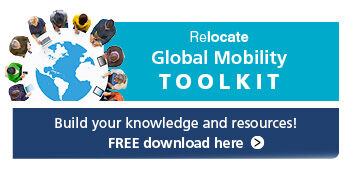Background guide to India
India is a developing economy and continues to draw investment from around the world. IKAN Relocation Services provides an overview of India, ranging from the people themselves through to the economy.

India overview
The people
Religion is central to the Indian culture and its practice can be seen in virtually every aspect of life. The dominant and oldest religion is Hinduism, which is practiced by over 80 per cent of the population. India’s second largest religion is Islam, making India home to one of the largest Muslim populations outside the Middle East. India is also home to two other ancient religions, Buddhism and Jainism (originally stemming from Hinduism), which together with Hinduism have moulded Indian thinking and philosophy.India’s official language is Hindi, which is the primary tongue of 30 per cent of the population. Hindi, with at least 13 different dialects, was chosen as the official language because of its connection with India's history before independence, rather than because it was the most commonly spoken language. It is one of 18 official Indian languages recognised by the Indian Constitution. In addition, a multitude of other languages and dialects are spoken.English is the second or associate language, and as such, it is the most important language for national, political and commercial communication. It is, however, spoken fluently by less than 5 per cent of the population.Nationality
Noun: Indian(s) Adjective: IndianPopulation
1,236,344,631 (July 2014 estimate)Population growth rate
25 per cent (2014 estimate)Ethnic groups (according to the 2001 census)
The ethnic groups in India include, Indo-Aryan 72 per cent, Dravidian 25 per cent, Mongoloid and other 3 per cent.Religions
Religions include, Hindu which makes 80.5 per cent of the population, Muslim 13.4 per cent, Christian 2.3 per cent, Sikh 1.9 per cent, other 1.8 per cent and unspecified 0.1 per centLanguage
Languages include, Hindi 41 per cent, Bengali 8.1 per cent, Telugu 7.2 per cent, Marathi 7 per cent, Tamil 5.9 per cent, Urdu 5 per cent, Gujarati 4.5 per cent, Kannada 3.7 per cent, Malayalam 3.2 per cent, Oriya 3.2 per cent, Punjabi 2.8 per cent, Assamese 1.3 per cent, Maithili 1.2 per cent and other 5.9 per cent.Note: English enjoys the status of subsidiary official language but is the most important language for national, political, and commercial communication. Hindi is the most widely spoken language and primary tongue of 41 per cent of the people.There are 14 other official languages, including: Bengali, Telugu, Marathi, Tamil, Urdu, Gujarati, Malayalam, Kannada, Oriya, Punjabi, Assamese, Kashmiri, Sindhi, and Sanskrit; Hindustani is a popular variant of Hindi/Urdu spoken widely throughout northern India, but is not an official language.Government
Country name
- Conventional long form: Republic of India
- Conventional short form: India
- Local long form: Republic of India/BharatiyaGanarajya
- Local short form: India/Bharat
Government type
Federal republicCapital
New DelhiIndependence
15 August 1947 (from UK).Legal system
The common law system is based on the English model. Separate personal law codes apply to Muslims, Christians, and Hindus; judicial review of legislative actsCurrency
Indian rupee (INR)Economy Overview
Economy
India is developing into an open-market economy, yet traces of its past autarkic policies remain.Economic liberalisation measures, including industrial deregulation, privatisation of state-owned enterprises, and reduced controls on foreign trade and investment, began in the early 1990s. The measures served to accelerate the country's growth, which averaged under 7 per cent per year from 1997 to 2011.India's diverse economy encompasses traditional village farming, modern agriculture, handicrafts, a wide range of modern industries, and a multitude of services. Slightly less than half of the workforce is in agriculture, however, services are the major source of economic growth, accounting for nearly two-thirds of India's output with less than one-third of its labour force.India has capitalised on its large educated English-speaking population to become a major exporter of information technology services, business outsourcing services, and software workers.India's economic growth began slowing in 2011 because of a decline in investment, caused by high interest rates, rising inflation, and investor pessimism about the government's commitment to further economic reforms and about the global situation.In late 2012, the Indian Government announced additional reforms and deficit reduction measures, including allowing higher levels of foreign participation in direct investment in the economy.The outlook for India's long-term growth is moderately positive due to a young population and corresponding low dependency ratio, healthy savings and investment rates, and an increasing integration into the global economy.However, India has many challenges that it has yet to fully address, including poverty, corruption, violence and discrimination against women and girls, an inefficient power generation and distribution system, ineffective enforcement of intellectual property rights, decades-long civil litigation dockets, inadequate transport and agricultural infrastructure, limited non-agricultural employment opportunities, high spending and poorly-targeted subsidies, inadequate availability of quality basic and higher education, and accommodating rural-to-urban migration.Growth in 2013 fell to a decade low, as India's economic leaders struggled to improve the country's wide fiscal and current account deficits.Rising macroeconomic imbalances in India and improving economic conditions in Western countries, led investors to shift capital away from India, prompting a sharp depreciation of the rupee.However, investors' perceptions of India improved in early 2014, due to a reduction of the current account deficit and expectations of post-election economic reform, resulting in a surge of inbound capital flows and stabilization of the rupee. .Industries
The industries in India include, textiles, chemicals, food processing, steel, transportation equipment, cement, mining, petroleum, machinery, software and pharmaceuticals.Exports – partners
The largest export partners are the UAE 12.3 per cent, US 12.2 per cent, China 5.0 per cent, Singapore 4.9 per cent and Hong Kong 4.1 per cent (Source: The World Factbook, 2012).For more Economic Information visit the Office of the Economic Advisor, economic and financial data from the Indian government.Financial information from the Indian government, visit the Ministry of Finance.
Geography & Climate
Location
Southern Asia, bordering the Arabian Sea and the Bay of Bengal, between Burma and Pakistan.Area
Total size of India, 3,287,263 sq km- Land, 2,973,193 sq km
- Water, 314,070 sq km
Land boundaries
Total boundary size: 13,888 km- Bangladesh 4,142 km
- Bhutan 659 km
- Burma 1,468 km
- China 2,659 km
- Nepal 1,770 km
- Pakistan 3,190 km
Climate
Climate varies from tropical monsoon in south to temperate in north.Terrain
Upland plain (Deccan Plateau) in south, flat to rolling plain along the Ganges, deserts in west and the Himalayas in north.Elevation extremes
The lowest point is the Indian Ocean 0 m and the highest point is Kanchenjunga 8,598 m.Natural hazards
Droughts, flash floods as well as widespread destructive flooding from monsoonal rains, severe thunderstorms, earthquakes. Volcanism, Barren Island (elevation 354 m) in the Andaman Sea has been active in recent years.Environment – current issues
Deforestation, soil erosion, overgrazing, desertification, air pollution from industrial effluents and vehicle emissions, water pollution from raw sewage and runoff of agricultural pesticides, tap water is not potable throughout the country, huge and growing population is overstraining natural resources.Geography – note
Dominates South Asian subcontinent, near important Indian Ocean trade routes, Kanchenjunga, third tallest mountain in the world, lies on the border with Nepal.History Overview
Early History
India's extraordinary history is intimately tied to its geography.A meeting ground between the East and the West, it has been attractive to foreigners and invaders, while at the same time its natural isolation and diverse cultures have allowed it to adapt to, and absorb, many of the peoples who penetrated its mountain passes.India's history began more than 4,500 years ago with the first civilization in the Indus Valley in the north, dating to 2500 - 1700 BC.Outsiders who have had a strong presence in India during the course of its history include the Greeks under Alexander the Great, the Kushanas from Central Asia, the Mongols under Genghis Khan, Muslim traders and invaders from the Middle East and Central Asia, and finally the British and other European nations.The influence of these varied empires resulted in the founding of Buddhism around 500 BC, a series of rise and falls in the popularity of Hinduism, the introduction of Islam in 1192, and the development of India's reputation as a land renowned for its economic as well as cultural wealth.British Rule
In 1858, India came under direct rule of the British crown. During the time of the Raj, the British developed an infrastructure, established a centralised administration and structure of governance. By refusing to allow the Indian population power, they created a situation that eventually led to the demise of the Raj.Opposition to British rule became a mass movement with the arrival of Mohandas Karamch and Gandhi who devised a unique strategy for India's freedom struggle, based on non-violence and civil disobedience.Gandhi conceived and led the non-cooperation movement in 1922, the Salt Satyagraha in 1930 and the Quit India Movement in 1942, urging the British to withdraw from India or face nationwide civil disobedience.Independence
Just after World War II, in the midst of civil unrest, Britain ended its rule of India, and in early 1947 announced its intention to transfer its power.In June 1947, Congress and Muslim League leaders, against Gandhi’s wishes, agreed to partition the country along religious lines, with the predominantly Muslim areas of Punjab and Bengal becoming Pakistan.Indian Muslims were free to move to Pakistan, while Hindus and Sikhs wanting to live in India moved there. This was a difficult and violent time for India with millions displaced from their homes due to political decisions.India gained independence on August 15, 1947. This also marked the start of their struggle with Pakistan over the border. Three wars have been fought between India and Pakistan since 1947, and the Jammu and Kashmîr region remains an unresolved flashpoint between the two countries.Gandhi's right-hand man, Jawarhalal Nehru, became India's first Prime Minister. Nehru was a successful leader, steering the young nation until his death in 1964. During his tenure, the country saw widespread reforms such as increasing the legal rights of women and deterring caste discrimination, he also promoted education as a way to the future.Indira Gandhi became Prime Minister when her father Nehru, died. She served three separate terms and a fourth term. She nationalised the banking industry and intervened in the Bangladesh Liberation War, which led to the independence of East Pakistan as the new country of Bangladesh.Rajiv Gandhi was elected after his mother's death. He lifted the government's restrictions on foreign currency, travel, foreign investment and imports.He also strove to improve relations with the USA, thus increasing scientific cooperation, which led to major growth of the telecommunications industry, the space program and created an environment where the software industry and information technology sectors could flourish.In 1992, widespread Hindu-Muslim violence erupted after Hindu extremists demolished the 400-year-old Babri mosque at Ayodhya, planning to replace it with a Hindu temple. The Allahabad High Court ruled that the holy site of Ayodhya should be divided between Hindus and Muslims in September 2010.In December 2004, an earthquake off the Indonesian coast caused a tsunami that affected many countries, including India, where it killed thousands and left hundreds of thousands homeless along its south-eastern coast.In 2007, India recorded its strongest economic growth in 20 years, despite the global financial crisis.Nearly 200 people were killed in attacks on the main tourist and business area of the financial capital Mumbai in November 2008. India blamed Pakistan and the following month called for a pause in the peace process with Pakistan.In September 2013, four men were sentenced to death for the rape and murder of a student in Delhi. The protests surrounding the event led to new legislation concerning rape and offenses against women.In November 2013, India launched its first interplanetary mission to Mars, making ISRO the fourth space agency. ISRO was the first space agency to reach Mars on its maiden attempt.Information provided by IKAN Relocation Services.For related news and features, visit our India section.Relocate’s new Global Mobility Toolkit provides free information, practical advice and support for HR, global mobility managers and global teams operating overseas. Access hundreds of global services and suppliers in our Online Directory
Access hundreds of global services and suppliers in our Online Directory
©2025 Re:locate magazine, published by Profile Locations, Spray Hill, Hastings Road, Lamberhurst, Kent TN3 8JB. All rights reserved. This publication (or any part thereof) may not be reproduced in any form without the prior written permission of Profile Locations. Profile Locations accepts no liability for the accuracy of the contents or any opinions expressed herein.
































